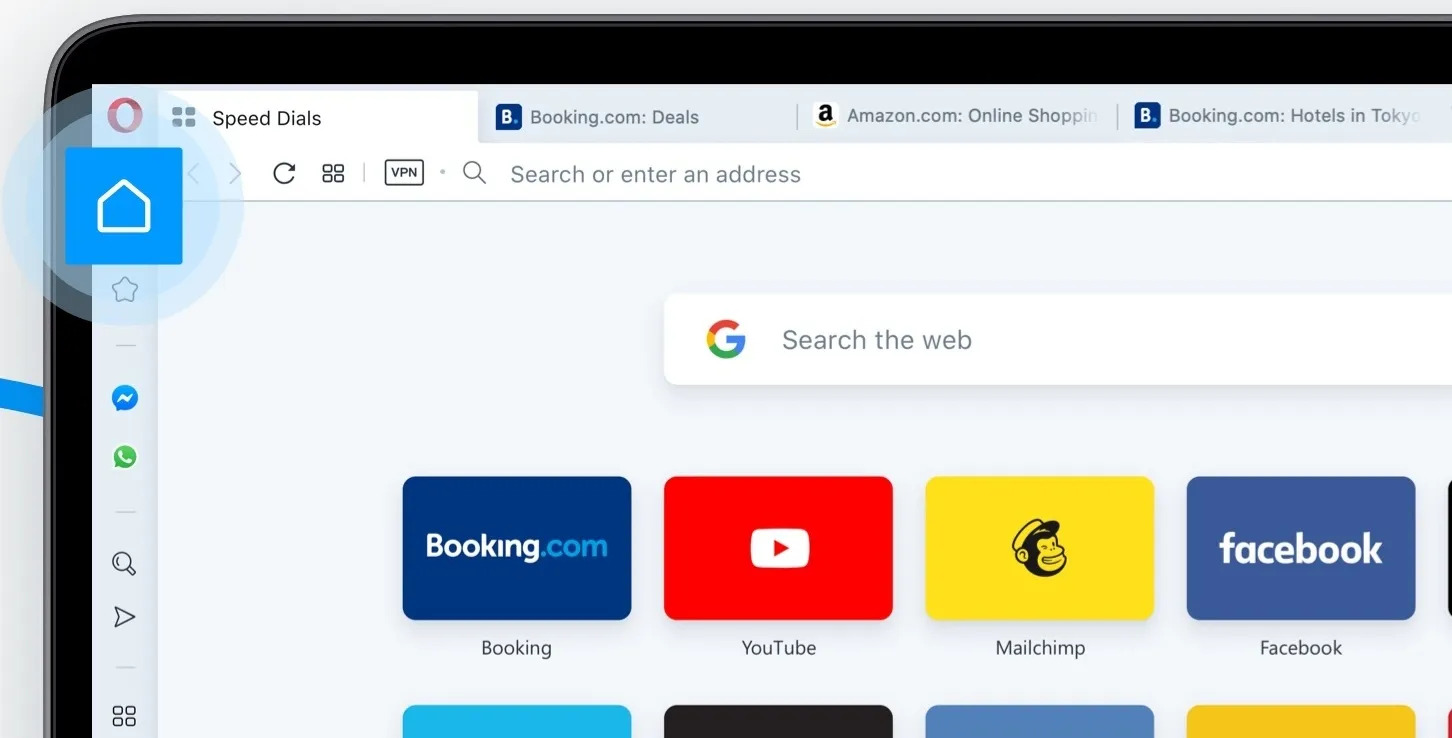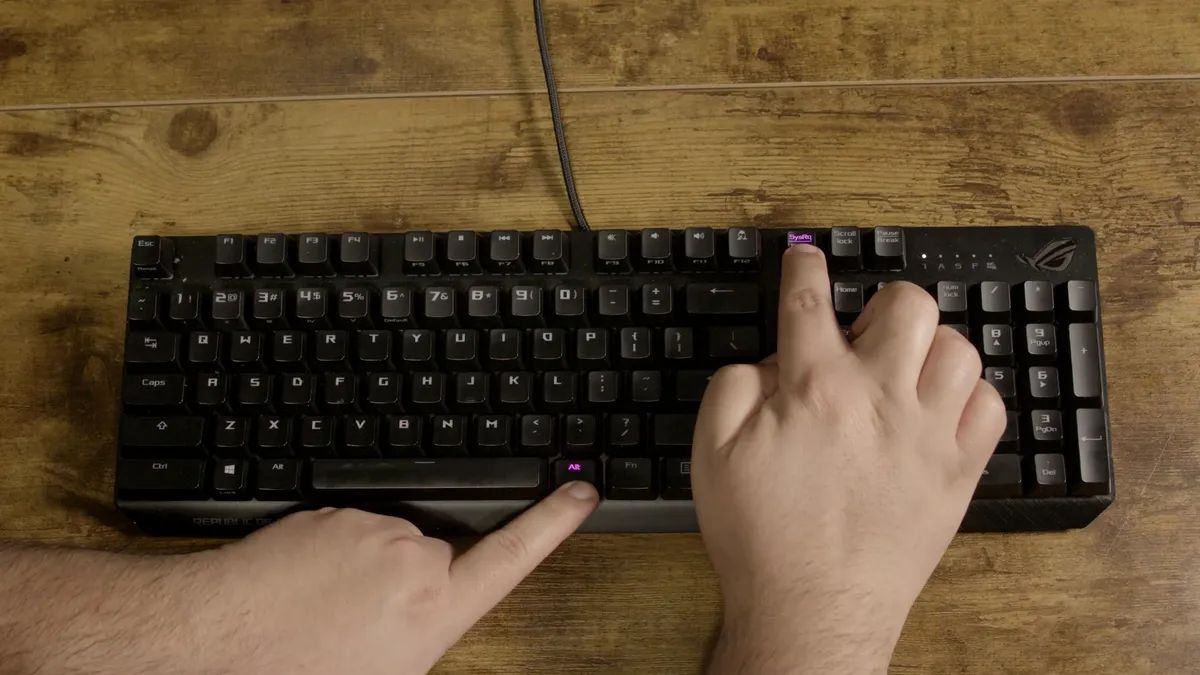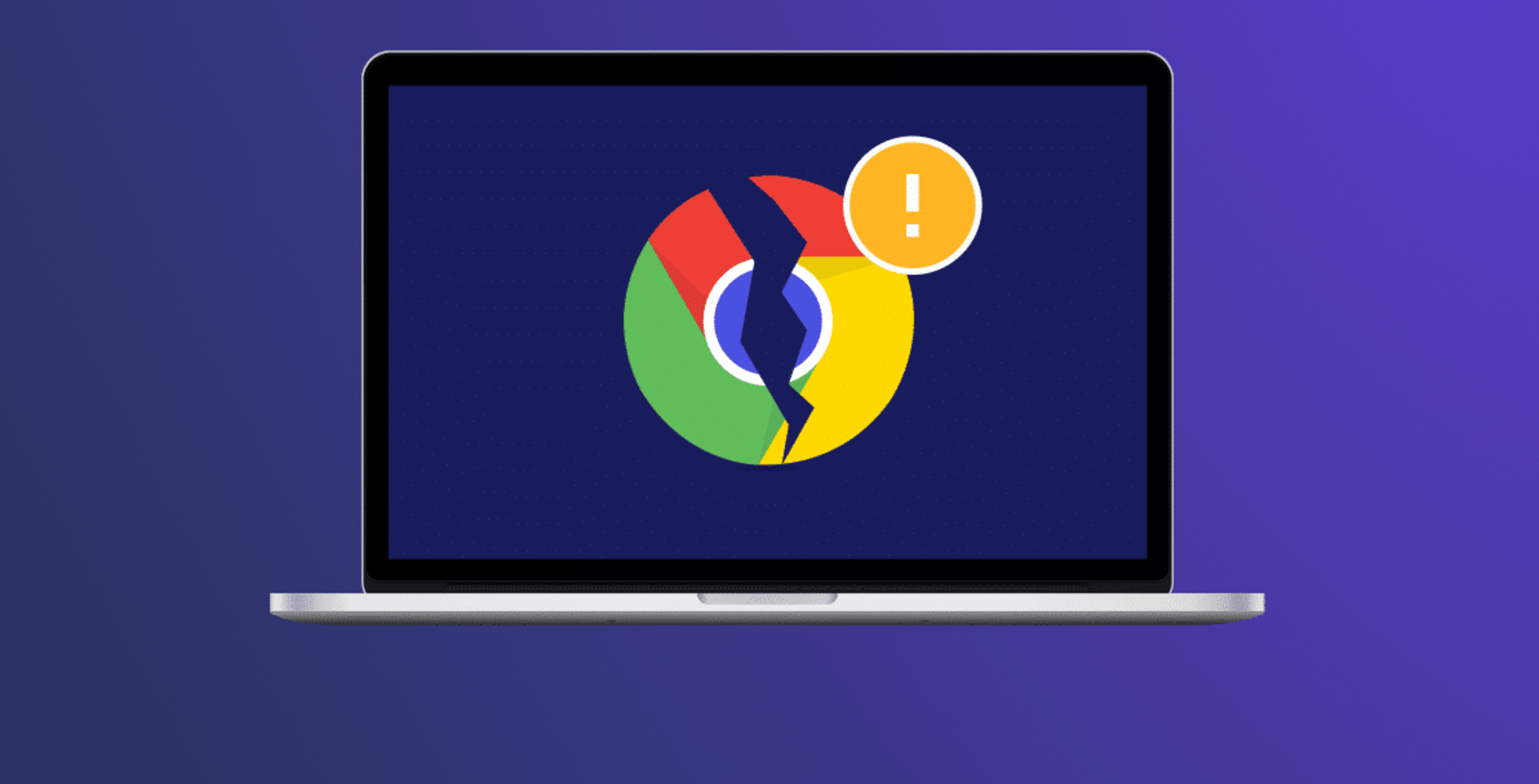Introduction
When it comes to using a web browser, there may be times when you need to close it. Whether you’re done with your online tasks, experiencing technical issues, or simply want to save resources on your device, knowing how to close a browser properly is essential. Closing a browser may seem like a simple task, but each operating system and device may have slight variations in the process.
In this article, we will discuss how to close a browser on various operating systems, including Windows, Mac, Linux, iOS, and Android. We will also explore how to force close a browser when it becomes unresponsive. Additionally, we’ll provide you with some tips on closing a browser properly to ensure a smooth browsing experience.
Whether you’re a tech-savvy individual or a beginner, understanding the correct method to close a browser can help you avoid potential security risks, save system resources, and improve overall device performance.
Now, let’s dive into the specifics of closing a browser on different operating systems and devices!
How to Close a Browser on Windows
If you’re using a Windows operating system, closing a browser is a straightforward process. Here are a few different ways you can close a browser on Windows:
1. Clicking the X Button: The most common method to close a browser on Windows is by clicking the X button located at the top right corner of the browser window. Simply move your mouse cursor to the X button and click on it, and the browser will close.
2. Using the Keyboard Shortcut: Another quick way to close a browser on Windows is by using a keyboard shortcut. Hold down the Alt key and press the F4 key simultaneously. This will close the active window, which, in this case, is the browser.
3. Right-Clicking on the Taskbar: You can also close a browser by right-clicking on its corresponding icon on the taskbar. In the pop-up menu, select the “Close” option, and the browser will exit.
4. Using the Task Manager: On rare occasions when a browser becomes unresponsive or frozen, you can force close it using the Task Manager. To access the Task Manager, press Ctrl + Shift + Esc simultaneously. In the Task Manager window, select the browser from the list of running processes, and then click the “End Task” button.
Remember to close any other open tabs or windows within the browser before executing these methods.
Closing a browser properly on your Windows device ensures that all active processes associated with the browser are terminated, preventing any potential security threats and freeing up system resources.
How to Close a Browser on Mac
If you’re using a Mac computer, closing a browser is slightly different from the process on Windows. Here are a few methods you can use to close a browser on a Mac:
1. Clicking the Red Button: Similar to Windows, you can close a browser on a Mac by clicking the red button located at the top left corner of the browser window. It may be different depending on the browser you’re using, but it usually resembles a circle with a dot inside.
2. Using the Keyboard Shortcut: Another way to close a browser on a Mac is by using a keyboard shortcut. Hold down the Command (⌘) key and press the Q key simultaneously. This will instantly close the active window, which is the browser you’re using.
3. Accessing the Menu Bar: Some browsers on Mac offer a “Quit” option in the menu bar. To close the browser using this method, click on the browser name in the menu bar at the top of the screen and select the “Quit” option from the dropdown menu. This will close the browser and all its active windows.
4. Force Quitting: If the browser becomes unresponsive or frozen, you can force quit it. To do this, press the Command (⌘) + Option (⌥) + Esc keys simultaneously. This will bring up the “Force Quit Applications” window, where you can select the browser and click the “Force Quit” button to close it forcefully.
It’s important to note that properly closing a browser on your Mac ensures that all active processes associated with the browser are terminated, safeguarding your device’s security and optimizing performance.
How to Close a Browser on Linux
If you’re using a Linux operating system, closing a browser is similar to the process on other operating systems. Here are a few methods you can use to close a browser on Linux:
1. Clicking the X Button: Like on Windows and Mac, you can close a browser on Linux by clicking the X button located at the top right corner of the browser window. Simply move your mouse cursor to the X button and click on it, and the browser will close.
2. Keyboard Shortcut: Most Linux distributions allow you to use a keyboard shortcut to close the active window. Press Alt + F4 simultaneously, and the browser will close. This method is convenient if you prefer using keyboard shortcuts.
3. Right-Clicking on the Taskbar: Some Linux desktop environments have a taskbar where running applications are listed. Right-click on the browser’s icon on the taskbar, and from the context menu, select the “Close” or “Quit” option. The browser will then close.
4. Using the Terminal: Linux users have the option to close a browser using the terminal. Open the terminal and type in the command “killall [browser-name]” replacing [browser-name] with the actual name of the browser you’re using (e.g., chrome, firefox). Press Enter, and the browser will be terminated.
Closing a browser properly on Linux ensures that all active processes associated with the browser are ended, allowing for a smooth user experience and preventing any potential security vulnerabilities.
How to Close a Browser on iOS
If you’re using an iOS device, such as an iPhone or iPad, the process of closing a browser is simple and intuitive. Here are the steps to close a browser on iOS:
1. Swipe Up from the Bottom: On devices with a physical Home button, swipe up from the bottom of the screen to reveal the App Switcher. Swipe left or right to navigate to the browser you want to close. Then, swipe up on the browser’s preview card to close it.
2. Gesture-based Navigation: On devices without a physical Home button, such as the iPhone X and newer models, swipe up from the bottom of the screen and pause in the middle to access the App Switcher. Follow the same steps as mentioned above to close the browser.
3. Double-Tap the Home button: If you’re using an older iOS device with a physical Home button, double-tap the Home button to bring up the App Switcher. Find the browser you wish to close and swipe up on its preview card to shut it down.
When you close a browser on iOS, it not only ends the active browsing session but also helps conserve battery life and reduce memory usage on your device.
It’s worth noting that iOS is designed to manage and optimize system resources automatically, so most users don’t need to manually close applications frequently. However, closing a browser when it’s not in use can be beneficial in certain cases.
How to Close a Browser on Android
If you’re using an Android device, closing a browser is a simple process. Here’s how you can close a browser on Android:
1. Tap the Recent Apps Button: On most Android devices, there is a dedicated Recent Apps or Overview button. It is usually located at the bottom of the screen or on the navigation bar. Tap the Recent Apps button to access the list of recently-used apps. Swipe left or right to find the browser you want to close, and then swipe it off the screen to close it.
2. Swipe Up from the Navigation Bar: On newer Android devices with gesture-based navigation, swipe up from the bottom of the screen to access the app overview. Find the browser in the list of open apps, and then swipe it left or right to close it.
3. Use the Back Button: Some Android browsers allow you to close tabs or windows by using the back button. While in the browser, tap the back button repeatedly until you return to the home screen, and the browser will close.
4. Access the App Switcher: Depending on your device’s manufacturer or Android version, long-pressing the Home button may open the App Switcher. From there, find the browser you want to close and swipe it away or tap the close button to shut it down.
Closing the browser on your Android device not only ends the browsing session but also helps conserve battery life and free up system resources.
It’s important to note that some browsers may have specific features or settings that affect the closing process. Therefore, the steps mentioned above may vary slightly depending on the browser you are using on your Android device.
How to Force Close a Browser
Sometimes, a browser may become unresponsive or freeze, making it necessary to force close it. Here’s how you can force close a browser on different operating systems:
1. Windows: To force close a browser on Windows, you can use the Task Manager. Press Ctrl + Shift + Esc to open the Task Manager. In the Task Manager window, locate the browser process (e.g., Chrome.exe, Firefox.exe) under the “Processes” or “Applications” tab. Right-click on the process and select “End Task” or “End Process” to force close the browser.
2. Mac: On a Mac, you can force quit a browser using the “Force Quit Applications” option. To access this option, press Command + Option + Esc. In the pop-up window, select the browser you want to force quit, and click “Force Quit” to close the unresponsive browser.
3. Linux: In Linux, you can force close a browser by using the terminal. Open the terminal and type the command “killall [browser-name]” (e.g., killall chrome, killall firefox) and press Enter. This command will forcefully terminate the browser process.
4. iOS and Android: On both iOS and Android, you can force close a browser by accessing the App Switcher or Recent Apps screen and swiping it off the screen. This action will forcefully close the unresponsive browser.
Force closing a browser should be used as a last resort when all other methods fail to close an unresponsive browser. It’s important to note that force closing a browser may result in the loss of unsaved data, so it should be done with caution.
After force closing a browser, it’s advisable to relaunch it and check for any pending updates or plugins that may have caused the issue.
Tips for Closing a Browser Properly
Closing a browser properly not only ensures a smooth browsing experience but also helps maintain device performance and security. Here are some tips to keep in mind when closing a browser:
1. Close Unnecessary Tabs and Windows: Before closing a browser, make sure to close any unused tabs or windows within the browser. This helps free up system resources and improves performance.
2. Save Your Work: If you have any important data or unsaved work in the browser, it’s crucial to save it before closing. This helps prevent data loss and allows you to resume your tasks from where you left off.
3. Log Out of Websites: If you’re signed in to any websites or online services, log out before closing the browser. Logging out ensures the security of your accounts and prevents unauthorized access.
4. Clear Browser Cache: Regularly clearing your browser’s cache can help improve performance and free up storage space. Before closing the browser, you can clear the cache through the browser’s settings or preferences.
5. Update the Browser: Keeping your browser up to date ensures that you have the latest security patches and bug fixes. Check for any available updates before closing the browser and install them if necessary.
6. Ensure All Downloads are Complete: If you have any ongoing downloads, make sure they are completed or canceled before closing the browser. This prevents any potential issues or corruption with the downloaded files.
7. Check for Background Processes: Some browsers continue to run in the background even after closing the main window. Check for any background processes in the task manager or app switcher and terminate them if needed.
By following these tips, you can ensure that you close the browser properly, optimize your device’s performance, and safeguard your online activities.
Conclusion
Closing a browser may seem like a simple task, but understanding the correct methods for different operating systems and devices is crucial. Whether you’re using Windows, Mac, Linux, iOS, or Android, knowing how to properly close a browser ensures a smooth browsing experience, enhances device performance, and maintains security.
On Windows, you can close a browser by clicking the X button, using a keyboard shortcut, right-clicking on the taskbar, or using the Task Manager to force close it. Mac users can close a browser by clicking the red button, using a keyboard shortcut, accessing the menu bar, or force quitting it via the Force Quit Applications window. Linux users can close a browser by clicking the X button, using a keyboard shortcut, right-clicking on the taskbar, or terminating the browser process in the terminal.
On iOS devices, you can close a browser by swiping up from the bottom to access the App Switcher and swiping the browser off the screen. Android users can close a browser by tapping the Recent Apps button and swiping it off the screen or using the back button. In cases of unresponsive browsers, force closing can be done using the respective methods for each operating system.
Additionally, following some essential tips when closing a browser can further enhance your browsing experience. These tips include closing unnecessary tabs and windows, saving your work, logging out of websites, clearing the browser cache, updating the browser, ensuring all downloads are complete, and checking for background processes.
By implementing these practices, you can optimize your device’s performance, prevent data loss, maintain security, and ensure a seamless browsing experience.
Remember, the process of closing a browser may vary slightly depending on the operating system and device you’re using, so it’s always good to familiarize yourself with the specific steps for your setup. Now that you have a comprehensive understanding of how to close a browser properly, you can navigate the web with confidence!

























